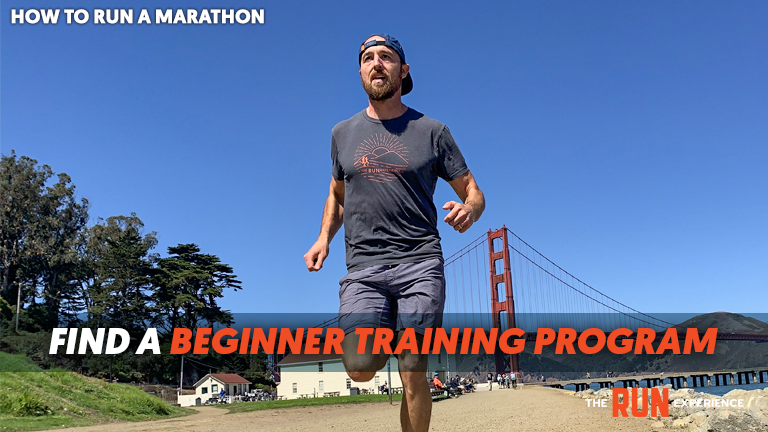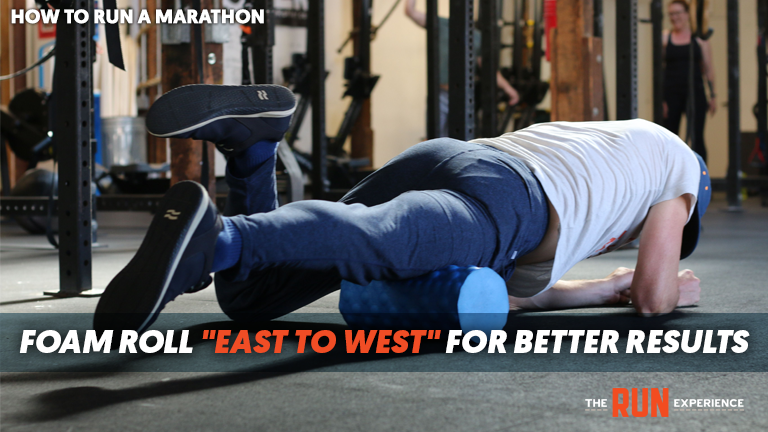How to Train for a Marathon for Complete Beginners (Training Plan)
Learn how to train for a marathon. Training for a marathon takes intent—this beginner marathon training plan helps you run your 1st marathon.

How to train for a marathon when you have never run a mile? Sounds crazy, right? Fortunately, we have a beginner marathon training plan that can take you from couch to finish line.
Not to come off as over-confident or anything, but running a marathon is totally possible even if today (right now) you don’t consider yourself a runner.
Training for a marathon is tough, but it’s completely doable if you have the right beginner marathon training plan and processes in place.
This article will teach you everything you need to know about how to train for a marathon. We’ll go over steps to get started, marathon training plans for beginners, and tips to keep you on your feet and avoid injury.
How to Train for a Marathon for Beginners
As long as you invest enough time in the endeavor, you too can become a marathon runner. Training for a marathon is all about time and commitment. It’s as much a mental battle as a physical one.
Training for a marathon can seem like a massive ordeal, but you need to break it down into bite-sized achievable pieces. In this article, we’ve got six steps to help you run a marathon even if you’ve never run a mile. And if you’re already a runner, we’ll show you how to train for a marathon while smashing your PRs and avoiding nagging injuries.
Ready to get started? Dive into this beginner marathon training plan.
Step 1: Register for a Marathon You’re Excited About

You know that feeling when you book a vacation and every day after you’re so excited for the vacation to happen? You need to have that same anticipation about your marathon.
While marathon options might be more limited given the current situation with coronavirus, many fall and 2021 spring races are still open for registration. When choosing a marathon, ask yourself the following questions to help you decide:
- Do you want to travel to the marathon or run in your home town/city?
- Do you want to run on trails or roads?
- Do you want to run through the countryside or on city streets?
Answering these questions will help you narrow down the options. Check out race websites and look at course maps and photos. Imagine yourself on the course, maybe with friends and family cheering nearby.
If it doesn’t fill you with excitement and a splash of nerves, move on and keep clicking until you find the right one. Check Instagram and all social media for race reviews.
To find a marathon in the US, the website Running in the USA has a comprehensive list of the races being put on across the country this year into next year. It also has been updating race dates that have been postponed due to coronavirus.
Step 2: Follow a Beginner Marathon Training Plan

As a new runner, you need to first adapt to the motion of running. What it feels like on your feet, how to move your arms, and how to run a mile without stopping after a few minutes. To do this, you’ll need a regular training schedule.
Most marathon training plans for beginners range from 12 to 20 weeks. The Run Experience app has a 16-week beginner marathon training plan that covers everything a newbie or advanced runner would need, from running mechanics to mobility, plus weeks of scheduled workouts.
As a new runner, you should err on the side of giving yourself more time to train rather than less. The key is to find the sweet spot between feeling rushed to build endurance, and training so much that you burn out before race day.
Remember, too, that a marathon training plan for beginners is only as good as the runner implementing it. If you skip workouts or neglect any messages your body is communicating (like running through a sore hamstring or big blister), the plan is no longer serving you.
Step 3: Don’t Skip Long Runs & Speed Work
Your marathon running training should build up your weekly mileage to around 50 miles total per week with about three to five runs each week. Along with easy training runs, you should incorporate one or two workouts with speed intervals, and one long run every week.
The long-distance run day is crucial to your success as a marathon runner. Even though your long run pace should be about a minute to two minutes slower than marathon pace, long runs train the body and mind to run for multiple hours at a time.
Even though your long runs will not cover a full marathon distance, use them to practice for race day.
Wake up early and eat breakfast a few hours before you start, and kick off your run at the same time your marathon race starts. Try out different energy gel packs or other easily digestible carbs during your runs.
On the hydration side of things, make sure to drink sports drinks or other hydration products throughout the run, around every two miles.
Aid stations at most marathons are about 2 miles apart, so this way you’ll mimic a race-day scenario.
To learn more about marathon fueling, we have a great beginner’s nutrition guide video:
To simulate race day even more, consider signing up for a half marathon. You can use the race as a way to get in a long run while also experiencing start line crowds and pre-race jitters.
Speed Workouts
Now for speed workouts. Some people love them and some hate them. But there’s no denying it: speed work makes you a faster, stronger runner. An added bonus? It makes your easy runs feel easier.
As a new runner, you don’t have to overload on speed work. Interval runs, which alternate between a harder, faster pace and a recovery jog, are easy ways to get in speed work and expand your aerobic capacity.
About six weeks into training for a marathon, start to incorporate one interval run per week.
Get some more guidance on interval runs from Coach Holly in this 20-minute follow-along run or this 30-minute speed workout.
As you progress through your training, you also could do a tempo run once a week in addition to or instead of an interval workout.
A tempo run means holding a sustainable, medium effort for a prolonged period of time, ranging from 15-minutes to as long as an hour. Here’s a video explaining exactly how to pace a tempo runs for marathon training:
Step 4: Train Your Mind With Mindset and Mantras

Seasoned marathoners will tell you finishing a marathon is largely a mental battle, both for the training and the race. As you learn how to train for a marathon, you will have doubts and lose motivation.
By preparing your mind as well as your body during your marathon training plan, you’ll have a much better chance of crossing the finish line exhilarated rather than feeling like you gave up.
Two methods many runners find helpful for preparing mentally are mindset work and mantras. Mindset work can be done with meditation, journaling, or simply working at being more aware of your surroundings and internal and external sensations as you run.
Mantras are another way to help you push through tough runs. When you need to dig deep and fight to keep going, use your mantra to block out other, more debilitating thoughts. Repeat it over and over again as you run.
Only you can decide on a mantra that resonates with you, but here are some ideas:
- This is okay. I am okay.
- Light and smooth.
- Forward is forward.
- One foot in front of the other.
Check out the mindset training program on our app. It has a mindset training program to learn more about how to strengthen your emotional fitness and resilience—which is essential when training for a marathon.
Step 5: Go Farther with Cross-Training and Strength Training

To handle the higher mileage of a marathon runner as a new runner, you need to take care of your body when you’re not running just as much as when you’re running. Cross-training and strength training are two ways you can help your body handle the impact of marathon training.
Cross-training is any low-impact aerobic exercise that keeps your heart rate at a medium level for an extended period of time, similar to that of an easy run.
Biking, ellipticaling, swimming, and aqua jogging are all great cross-training options. Depending on your body and capabilities, you can cross-train as many as three times a week while training for a marathon.
On days you aren’t running, fit in a strength training workout. The key for a marathon strength training workout is to keep your foundation strong – think core, hips, and glutes – so you can make it through all the miles.
You don’t have to go super heavy on the weights, either, though you certainly can. Just make sure you consistently do one or two strength workouts a week with just your bodyweight or a light dumbbell.
If you’re still feeling skeptical about the notion of a marathon runner weight-lifting, watch our 3-part series on weight-lifting for marathon runners. It covers weight lifting myths, the pros and cons, and what specific lifts to do.
To get you started, here’s part one:
Step 6: Learn How to Recover Intelligently

The last piece of training advice you need for learning how to train for a marathon when you’ve never run before is learning how not to run. Let’s explain what we mean.
Learning how to properly do post-run recovery and rest days is extremely important for marathon training. Without rest and recovery, your body can’t properly absorb all the neuromuscular and cardiovascular changes you’re making with training.
These are the three factors you should focus on for smart marathon training recovery:
Sleep
Never underestimate how much sleep plays into marathon training and race day performance. Because sleep deficits build up over time, even skimping on a couple of hours each week can build up to massive fatigue.
On the weekends, fit in more snooze time with naps. And throughout your marathon training plan, make going to bed early a priority. It’s not fun, but it will make you recover so much faster from runs and workouts.
Foam Roll
Foam rolling massages the fascia, which is the network of connective tissue that covers your muscles and organs. As you become a runner and build new muscle, the fascia hardens and can form small knots that make your muscles less pliable, which can lead to tight muscles, soreness, and future injury.
Aim to foam roll at least once a week for 30 minutes on your rest day. However, the more you can do it, the better. It’s pretty hard to overdo it when it comes to foam rolling during marathon training.
But to make your foam rolling effective, don’t continually move up and down on the roller like you’re rolling bread dough.
Go slowly and maintain pressure on the muscle’s tight spots, holding the position for 30 seconds or longer. To further increase the release, gently rock left to right on the tight spot.
Here’s Coach Holly with some rest day tips and a foam rolling routine you can do anywhere:
Dynamic and Static Stretching
Dynamic stretching means stretching with short, one to two-second holds for a set number of repetitions. Unlike static stretching, when you hold a stretch for a longer period to lengthen the muscle, dynamic stretching moves the muscle through lengthening and shortening motions back-to-back, which helps increase range of motion by opening up the joints.
Dynamic stretching is best for things like warm-ups, and static stretches are great for cool-downs, when the muscles have already been worked and are tighter.
Try this dynamic warm-up routine either before a run, and this static stretching routine after a run.
How Long Does Training To Run A Marathon Take?
While we don’t want to rush into things, getting a general timeframe on the table can help. Our 16-week beginner marathon training plan is designed to get you ready in just 4 months, but faster is not always better.
This totally depends on your fitness level. But let’s break it down. We’re going to reference some of our own programs here, but the principles apply to any training program you use, and we’ve reviewed a bunch of them later in this article.
From Zero to Marathon
“I’m on the couch… I don’t run and/or it’s been a long time since I’ve run.” (i.e. How to run a marathon from scratch)
Training Time: 15 months, plus or minus 3 months.
- You need to start slowly, get your body used to running and probably work on a lot of the form and mechanic flaws that will crop up in the first 2-3 months. Our best advice is to start with our Beginner Running Program, then follow it up with the 30 Day Challenge,
- These two programs will take you from ground zero and build up a solid foundation of running, form technique practice, bodyweight strength training, and mobility drills.
- You can repeat either of the above programs for more base-building training, or enter some shorter races at the end of each cycle (5k or 10k) to push and practice racing.
- It’ll take some time to build your body up so that it can handle regular running and increased mileage without breaking down. You’ll likely run into a few roadblocks, and the strength and mobility work is where you’ll need to concentrate to keep injuries at bay.
- The plus or minus 3 months is depending on how fit you are and your athletic background. Even if you’re on the couch, if you have a long athletic background, you will likely bounce back into shape faster (but you also run the risk of getting injured because of trying to bounce back too fast). It also builds in time for things that pop up in our lives. Illness, travel, family obligations, and other events can add some time to your training cycle.
Relatively New Runner
“I’ve been running for over a year, but I’ve never done a race.” (or never done one longer than 10k). (i.e. How to run a marathon if I’m a regular runner)
Training Time: 5-6 months
- 1 month to build up to 20 miles a week, and start doing a long run, i.e. one run that pushes your distance beyond the others. By the end of the month, you should be able to run 6-8 miles comfortably.
- The 30 Day Challenge is the perfect pre-marathon training program! With a strong focus on building your athletic and running foundation, you’ll come out feeling fit, strong, and ready to tackle the challenges marathon training brings.
- 4 months of dedicated marathon training (16 weeks). This is a typical amount of time to build to a distance of 18-20+ miles for your long run (depending on your long run philosophy) and then taper before your race. Our Full Marathon Program will get you 1/2 marathon ready in 8 weeks (especially after the 30 Day Challenge) and more than marathon ready in 16 weeks!
So where is that mystery 6th month coming from? Are you expecting 5 months of pushing your body to go unexpectedly smooth? There will be roadblocks! Little aches and pains that you need to take into account, or a need for extra deload weeks. We recommend active recovery, but not necessarily increasing your mileage during these times. Build a little extra time into your training schedule and you’ll be happier and healthier for it.
Already Completed Half Marathon
I already run 1/2 marathons or have already done a marathon before. (i.e. How to run a marathon if I’m already pretty experienced, but want to go faster and be healthier)
Training time: 2 -4 months
- We recommend at least 2 months of building up to a marathon if you’ve already been racing 1/2 marathons. (we rarely recommend people jump into the middle of one of our programs, but if you’ve been training with us and just want to do the last two months, you could train through the second half of our Full Marathon Program. Leep in mind, the workouts may feel more difficult (not just the running mileage) if you haven’t followed our training methodology before.
- To build to a marathon for most runners, 16 weeks (4 months) gives you enough time to address issues, build up your strength and endurance, as well as work on your running form. (Again, we recommend our Full Marathon Program, which is a 4-month program, specifically designed for you to kick butt come race day!)
How to Pick the Right Race

There are many factors involved in selecting the right race for your first marathon. And choosing the wrong race could end up making your day of glory not so glorious.
Things to consider when picking a race:
- Budget: Think about the costs.
- Time of year: Choose a time of year where training is easy on you. This is why fall marathons are popular… because the bulk of your training will be during the summer months. That said, if you live somewhere where summers are over 100 degrees regularly a winter or early spring marathon might be just the ticket!
- Race registration: – Some races are hard to get into (NYC marathon is a lottery system, for example). If it’s your first marathon… make sure you have a backup plan if you can’t get in.
- Establish your goals for the race: Does this race support your other running goals?
- Check out the racecourse: If this is your first time, maybe don’t pick the hilliest course imaginable, especially if you live and train in a flat area.
- Also.. check out the weather for that time of year of your race. Weather can be a huge factor in your performance. In general, it’s always a little easier if it’s 10 degrees colder than you like (and are used to) than if it’s 10 degrees warmer.
Injury Prevention and Management
Embarking on marathon training is an exciting journey, but it's important to approach it with care to avoid common running injuries. Here's how you can prevent injuries and manage them if they occur:
Understanding Common Injuries: The most common running-related injuries include runner's knee, shin splints, plantar fasciitis, Achilles tendinitis, and IT band syndrome. These often stem from overuse, improper footwear, or incorrect running form.
Preventive Measures:
- Gradual Increase in Mileage: Avoid increasing your weekly running mileage by more than 10%. This gradual progression helps your body adapt without being overstressed.
- Proper Footwear: Invest in high-quality running shoes that suit your gait and replace them every 300-500 miles.
- Strength Training: Incorporate strength exercises, especially for your core, hips, and glutes, to improve stability and distribute the impact of running more evenly.
- Good Form: Practice proper running form. Keep your posture upright, avoid overstriding, and let your feet land beneath your body.
Warm-Up and Cool-Down Routines:
- Warm-Up: Begin each run with a dynamic warm-up to prepare your muscles. This can include leg swings, walking lunges, and light jogging.
- Cool-Down: Conclude your runs with a cool-down phase. Gradually reduce your pace before stopping and follow up with static stretching to relax your muscles.
Stretching Exercises: Regular stretching, both dynamic and static, can enhance flexibility and reduce the risk of muscle tightness and strain. Focus on calves, hamstrings, quadriceps, and hip flexors.
When to Seek Medical Advice: Listen to your body. If you experience persistent pain, swelling, or discomfort that doesn’t improve with rest, it's crucial to seek medical advice. Early intervention can prevent minor issues from becoming major setbacks.
Rest and Recovery: Do not underestimate the power of rest days. They are critical for muscle repair and overall recovery. Adequate sleep and nutrition also play a crucial role in injury prevention.
By incorporating these practices into your training, you not only reduce the risk of injury but also enhance your overall running experience. Remember, marathon training is a marathon itself, not a sprint. Patience and attentiveness to your body's needs are key to a successful and injury-free journey to the finish line.
Frequently Asked Questions
What if I miss a training day?
Missing a training day happens to everyone, whether due to illness, injury, or just a busy schedule. Here’s how to handle it:
- Don’t Panic: One missed day won’t ruin your training.
- Reschedule if Possible: If it’s early in the week, try to fit the missed run into another day.
- Move On: If you can’t reschedule, just continue with your training plan as scheduled. Avoid doubling up on workouts to prevent injury.
How do I handle bad weather?
Bad weather can be a challenge, but it doesn’t have to derail your training:
- Indoor Alternatives: Use a treadmill or indoor track.
- Weather Gear: Invest in weather-appropriate gear like waterproof jackets for rain or layers for cold weather.
- Safety First: If conditions are dangerous (ice, lightning), opt for an indoor workout instead.
What should I eat before and after a run?
Nutrition is crucial for performance and recovery:
- Pre-Run: Eat a light meal or snack rich in carbs and moderate in protein 1-2 hours before running (e.g., a banana with peanut butter).
- Post-Run: Refuel with a mix of protein and carbs within 30 minutes after your run (e.g., a smoothie with protein powder and fruit).
How do I stay motivated?
Staying motivated is key to sticking with your training plan:
- Set Small Goals: Break your training into smaller, achievable milestones.
- Join a Community: Find a local running group or online community for support.
- Track Progress: Use a running app or journal to track your improvements and celebrate small victories.
What if I get injured?
Injuries can be a setback, but they don’t have to end your marathon dreams:
- Listen to Your Body: Rest and seek medical advice if you experience pain.
- Cross-Train: Engage in low-impact activities like swimming or cycling to maintain fitness while you recover.
- Gradual Return: Ease back into running gradually and adjust your training plan as needed.
How do I choose the right running shoes?
The right shoes can make a big difference in your comfort and performance:
- Get a Professional Fitting: Visit a specialty running store for a gait analysis and fitting.
- Consider Your Needs: Think about your foot type, running style, and the surfaces you’ll be running on.
- Replace Regularly: Running shoes typically last 300-500 miles. Track your mileage and replace them as needed.
How do I handle race day nerves?
Nerves are natural, especially for your first marathon:
- Visualize Success: Picture yourself crossing the finish line and completing the race.
- Stick to Your Routine: Follow your usual pre-run routine to keep things familiar.
- Focus on the Positives: Remind yourself of how far you’ve come and the hard work you’ve put in.
How to Train for a Marathon—Making It Happen
Now that you know how to train for a marathon, it’s time to get out there and make it happen. Training for a marathon is a tough but rewarding process. Even if you’ve never run a mile before, don’t let that stop you from starting the journey!
For more information on marathon training plans for beginners, download our free comprehensive marathon training guide and check out our marathon tips playlist on YouTube.
If you want a comprehensive 16-week beginner marathon training plan that will get you across the finish line healthy and stronger than when you started, download our app for our full training plan, weekly workouts, and our out-of-this-world virtual running community.
